As the seasons change, you may need to think about changing your seasonal tires. Whether you're switching to winter tires or to summer tires, it's important to think about how you store your off-season set.
You may have them changed by a professional or do it in your garage at home. But what do you do after they have been taken off? Knowing how to store tires after removing them from your vehicle is essential. In fact, it’s more important than most people realize.
If you don’t handle and store your tires properly, their characteristics can change. This can shorten their life. They can even deteriorate so badly in storage that they need to be replaced.
But if you handle and store them correctly, they will deliver years of service – and you’ll save money.
Using some detergent, water and a tire brush, clean tires before storing them. This will help remove a season’s worth of road grime and brake. Clean your wheels, too, if you store your tires on them. Make sure they’re completely dry before the next step.
This next step requires inaction, rather than action. Tires don’t need any kind of dressing or gloss product applied prior to storage. Tire compounds are formulated to resist ozone cracking and other environmental stressors. Such products can hinder rather than help extend the longevity of your tires.
Find a large, airtight plastic bag to fit each tire. Try yard bags or leaf bags. Ensure the bag (and tire) is free of moisture, then remove as much air as possible from the bag (use your vacuum cleaner!) and tape it shut.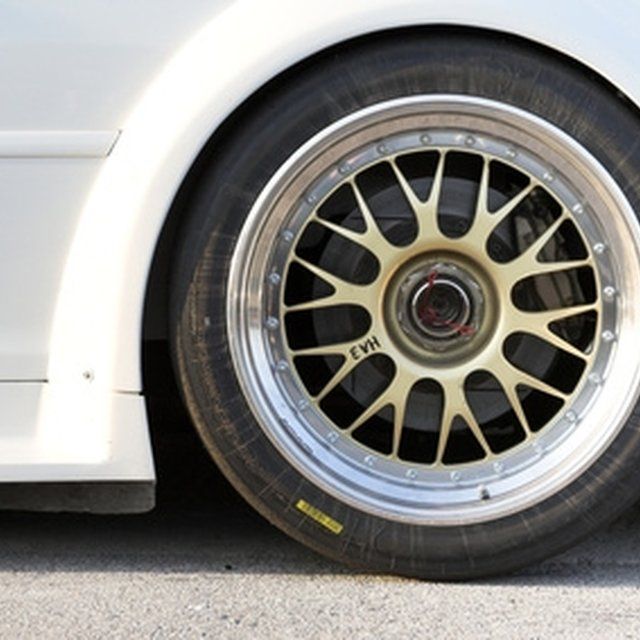 This airtight environment will reduce evaporation of oils from the rubber compounds. Specific tire storage caddies or tire totes are also available. These make transporting and storing tires easier and help keep them grime and dust free. However, they aren’t air tight. If you want to use them, bag tires as above first, then place them in your tire tote.
This airtight environment will reduce evaporation of oils from the rubber compounds. Specific tire storage caddies or tire totes are also available. These make transporting and storing tires easier and help keep them grime and dust free. However, they aren’t air tight. If you want to use them, bag tires as above first, then place them in your tire tote.
UV rays and the sun’s heat can wreak havoc on rubber. Your tire storage location should keep them out of direct sunlight.
In cold weather or in warm, tires should never be stored in the open air, even under a protective covering. Think cool, dry, moderately ventilated – and of course out of the sun. Your basement or another climate-controlled space is ideal. If there is a heat source in the room, the tires must be shielded from it. Most garages, sheds and attics undergo a range of temperatures, precipitation and humidity. You want to avoid these fluctuations.
 Avoid chemical exposure
Avoid chemical exposureYour number one chemical to avoid: Ozone. It’s particularly damaging to tires. Electric motors that use contact brushes generate ozone. These can include:
Ensure your storage area contains none of these items. The following should also be avoided:
Got whitewalls – or other white parts (like lettering) on your tires? In case you’ve decided not to bag your tires, store them with white areas touching other white areas, and black touching black. Here’s why: The black rubber on the white side is compounded differently than the black rubber on the other side. A layer of non-staining black rubber is used on the tire's white side to prevent oils migrating from the black to the white areas and causing discoloration. The black sidewall uses standard rubber. Therefore, store black-to-black and white-to-white to help keep white rubber bright and avoid marks.
Therefore, store black-to-black and white-to-white to help keep white rubber bright and avoid marks.
You have three options for how to store your tires:
The best option is standing, as it puts less stress on the tires. If you must stack, try not to stack too high. You want to avoid it tipping and damaging the tires. Tires mounted on rims? Stacking is actually preferable in this case. Another great option for tires on rims is hanging them from tire racks or hooks. Never hang unmounted tires as this can distort and damage them.
Tires will age. But these tips will help extend their life. If you want to make sure that the storing of your tires is in professional hands we would recommend to let them be stored at your tire dealer. And remember: It’s a great idea to get your tires checked by a tire professional before they are mounted onto your vehicle again for another good season of driving.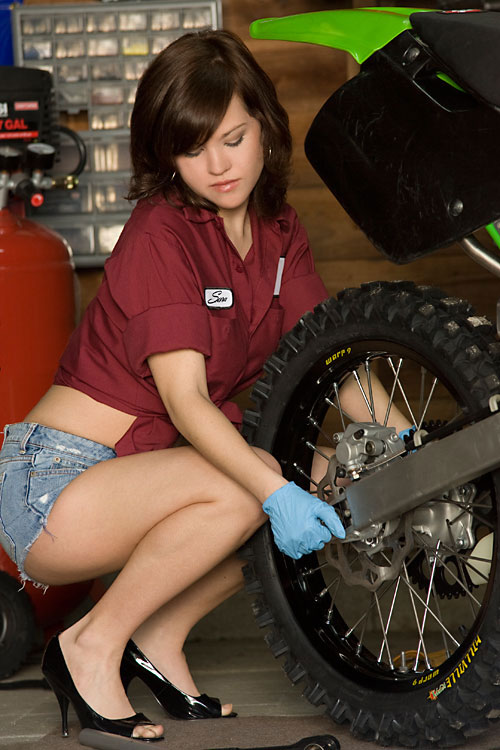
Tires are expensive to replace and repair, so effective tire storage is important. This guide will show you how to store tires to keep them from dry rotting or deteriorating.
Storing tires can be a frustrating task due to their size and the extra steps needed to keep them in good shape. However, you might not have a choice if you have a set of winter tires for your car. If you’re clueless of where to start, you’re not alone. Many of our storage customers don’t know how to store tires and come to use for advice.
It’s not uncommon to see tires stored outside without so much as a cover, but it’s likely these tires aren’t used on a road vehicle. If they are, their safety has been compromised in a major way. People also keep tires in garages that are exposed to big shifts in temperature. This solution is also not ideal.
Tires will degrade eventually, but there are things we can do to delay the process. Tires are sensitive to weather, sun, temperature, and time. The best way to store tires is in a dry, cool environment that will slow down the aging process. Keeping a fresh set of tires in the right conditions could add years to their life.
Tires are sensitive to weather, sun, temperature, and time. The best way to store tires is in a dry, cool environment that will slow down the aging process. Keeping a fresh set of tires in the right conditions could add years to their life.
These tire storage tips will show you how to prevent dry rot and keep tires in excellent condition.
It’s important to remove any traces of asphalt, dirt, and brake dust from the tires before storing. However, not all soap and methods of cleaning are created equal. Products specifically marketed for cleaning tires might not be appropriate in this case. Check the label. Avoid cleaning products with petroleum and all tire dressings. These products can be corrosive if your tires will be out of service for a few months or more.
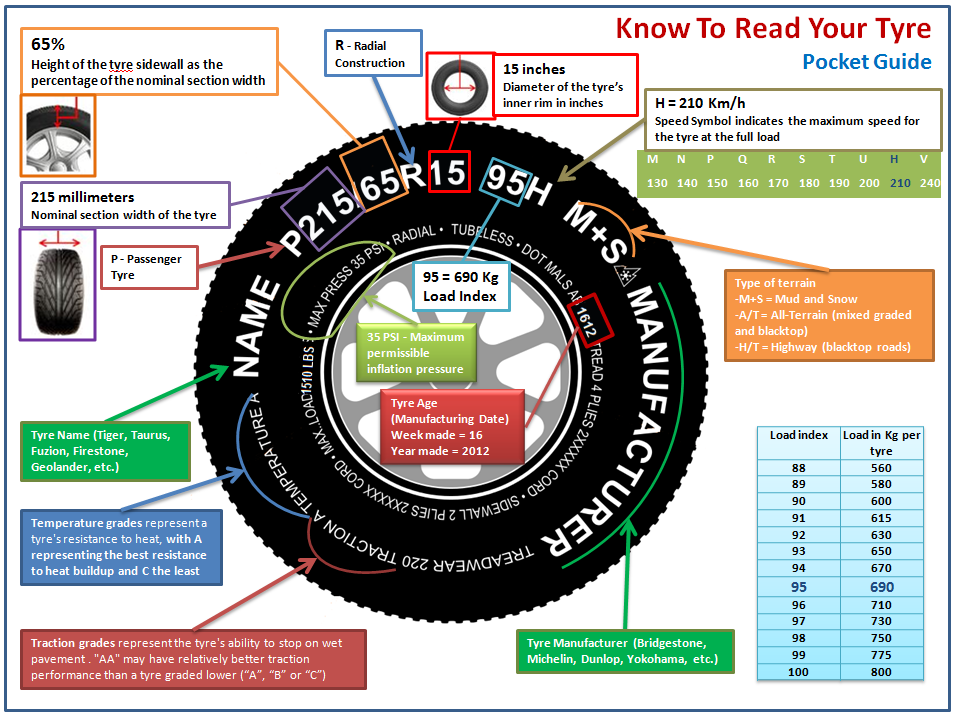
Some argue that UV rays are the biggest factor in tire aging. Direct sunlight can heat the rubber and cause premature deterioration. The UV rays penetrate the rubber, dry it out, and eventually breakdown the rubber compounds. The best way to keep tires from dry rotting is to limit sun exposure whenever possible.
Find a cool and dry environment to keep your tires. You want to locate a place where the temperature and humidity remain consistent throughout the duration. Dips or hikes in either of these can result in premature tire aging. Storing tires in a consistently warm environment is not good for the rubber, but it’s also not good to keep tires in freezing temperatures.
Dips or hikes in either of these can result in premature tire aging. Storing tires in a consistently warm environment is not good for the rubber, but it’s also not good to keep tires in freezing temperatures.
Aside from sunlight, the next leading tire deteriorator is oxygen. Some things in storage require airflow to breathe and stay in good condition. Tires, on the other hand, do better when they are vacuum sealed in plastic. An airtight space prevents oxygen from reaching the tires, slows down the oxidation process, and prevents the oil from evaporating and drying out the tires. Remember to wrap each tire individually for the best results.
Remember to wrap each tire individually for the best results.
Once you have a storage location, it’s important to store tires correctly. Stacking tires or hanging them can cause deformities if they aren’t moved around every so often. However, sometimes you might be forced to stack tires horizontally due to space constraints. If possible, consider the following suggestions for how to store tires.

If you are storing a car for more than a couple months, consider removing the tires from the car completely. Leaving the tires on the car can cause flat spotting. If you can’t remove the tires, at the very least be sure to take the car for a ride every few months so that the tires get some use. Tires do best in service because movement keeps oil evenly distributed in the rubber, which helps prevent it from drying out.
Tires can last for several years in storage if they are stored in the right conditions. However, many tire experts recommend replacing tires six years after their production date regardless of the tread. Old tires can be compromised in other ways when the rubber compound breaks down.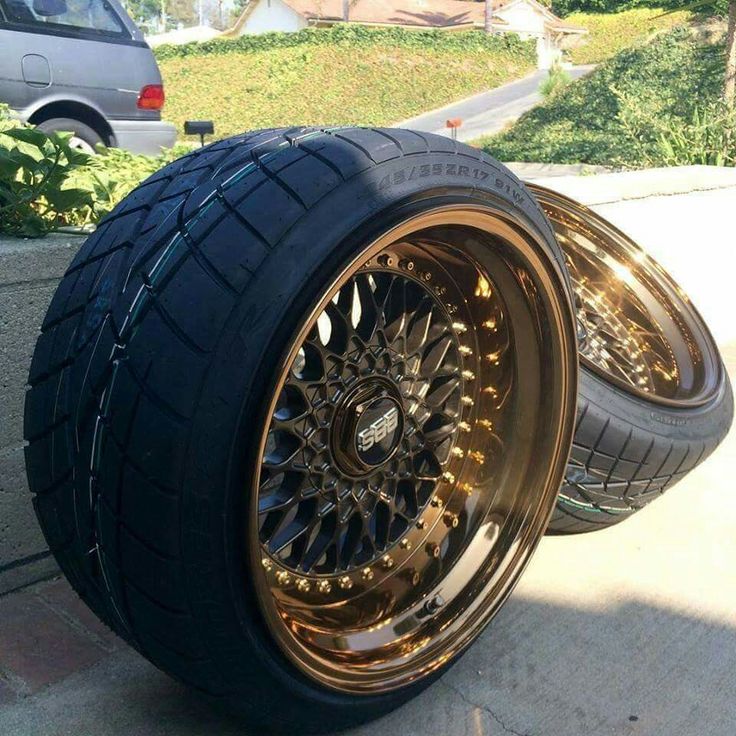
To give you another perspective, it’s like the difference between a brand new rubber band and one that’s been sitting in your desk for years. When you take your tires out of storage, make sure you look for signs of wear and check the date. If you are unfamiliar with what dry rot or crazing looks like, have a tire professional give your tires a once over.
We hope this tire storage guide taught you how to store tires with care. Make sure you keep yourself safe by following all the manufacturer recommendations and have your tires serviced at appropriate intervals.
Lauren Thomann has written about self storage and moving since 2015, making her our storage expert. She earned a Bachelor’s degree in English and Linguistics and has published over 150 articles on moving, storage, and home organization. She is also a contributing writer at The Spruce and Martha Stewart.
She earned a Bachelor’s degree in English and Linguistics and has published over 150 articles on moving, storage, and home organization. She is also a contributing writer at The Spruce and Martha Stewart.
When switching to summer or winter tires, the same question arises: how to store tires correctly so that you don’t have to buy new ones next season? Find out how best to store tires: the rules and the most common mistakes that motorists make.
Here motorists come to the aid of official regulatory documents of the Russian Federation, namely, GOST R 54266-2010 “Pneumatic tires. Packing, transportation and storage. It provides comprehensive information on how and under what conditions tires should be stored.
Despite the fact that national standards are presented in GOST, they practically do not differ from European ones, so owners of tires from well-known European manufacturers can safely be guided by its instructions when deciding on the issue of tire storage.
p. 6.2. It is possible to store tires with and without rims at any temperatures that are characteristic of central Russia, from - 30 ° С to + 35 ° С. Before starting operation, they must be kept at a positive temperature.
It is supplemented by item 6.10. which says that you can store tires in the open air for no more than a month. The information will be very useful for those who decide to store tires, for example, on an open balcony.
And as a continuation of paragraph 6.10. GOST, you should know that ultraviolet rays are the main enemy of rubber. Under their influence, it changes its structure, elasticity decreases, and this can lead to cracking. Therefore, if you plan to store tires on the balcony, then it is better not to leave them in the open sun, but to cover them with some kind of material, preferably waterproof, so you will additionally protect them from snow and rain.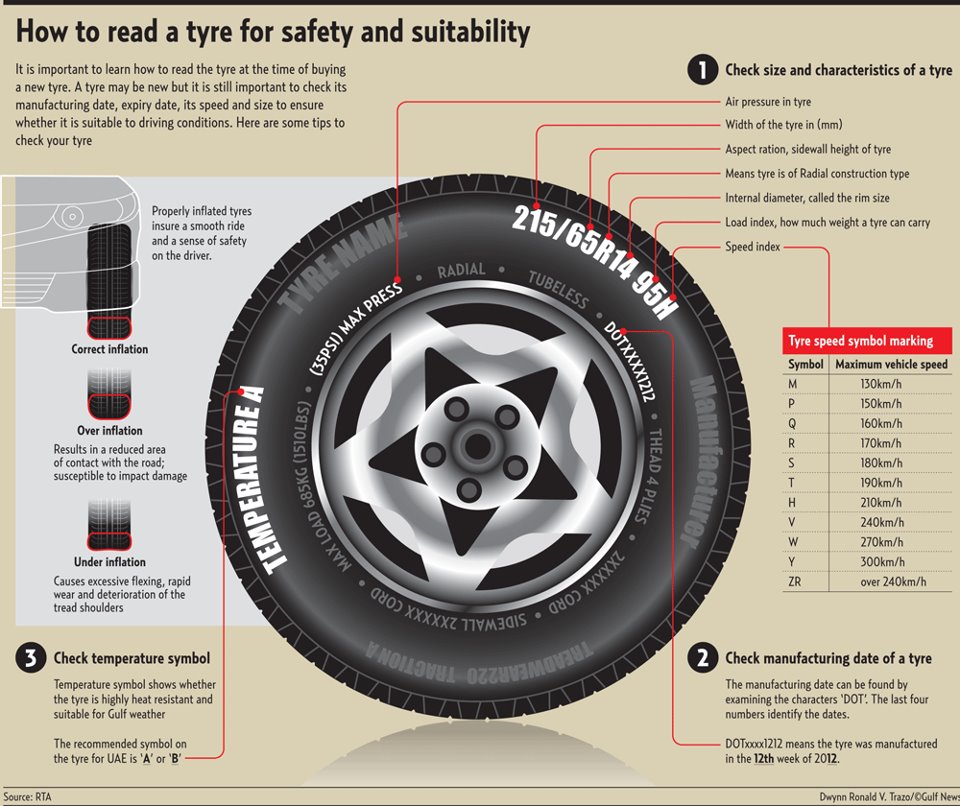
In clause 6.9. a general recommendation is given for tires of all sizes, which should be taken into account, namely: before leaving the tires to be stored on the balcony or in the garage, they must be washed. And here we are not talking about the aesthetic side of storage! The remaining dirt will accelerate the aging of the rubber. An additional plus - during washing, you will remove small stones stuck between the tread, inspect the tire for deep cuts, hernias and other damage.
For those who plan to garage tire storage, clause 6.1. GOST warns that rubber should be kept away from various chemicals: paints, solvents, etc. All these chemicals, if they get on the tire, can significantly spoil its properties.
Continuing the speech about storage in the premises of clause 6.3. GOST warns that tires should be stored at a distance of at least one meter from heating appliances. Rubber can simply dry out and crack locally prematurely.
Rubber can simply dry out and crack locally prematurely.
If you plan to store tires without rims in a garage or on a balcony, then in addition to the general rules, this method has its own nuances, namely: problems may arise during installation, and as a maximum, it will be unusable;
Most experts agree that the most reliable and profitable option is to store tires on rims. In this case, the rubber is less susceptible to deformation, the disks will not get scratches from the machines during the annual disassembly / beading procedure, but there are some nuances that should be taken into account: pressure will be created, and it can be deformed from this;
 5 atm.). Experts recommend stacking 2-4 wheels in piles, but this is not important.
5 atm.). Experts recommend stacking 2-4 wheels in piles, but this is not important. Tires can be stored in different ways: without rims or on rims. In the first case, it is better to put them vertically. In the second - hang or stack. But do not neglect the general rules for storing discs - following them will allow you to extend the life of the rubber.
You saw scammers, the company does not provide the declared services or has already closed, we will check!
* Message subject: {{(errors.subject) ? errors.subject[0] : '' }} SuggestionComplaintDidn't get through ScammersWrong addressThis is my company
Email: {{ (errors.email) ? errors.email[0] : '' }}
Message text: {{(errors.text) ? errors.text[0] : '' }}
Most car enthusiasts have two sets of tires - winter and summer. When using one set, you must store another set of tires somewhere.
Ignoring simple rules, many wonder why the second set becomes unusable. Often this is due to improper storage of tires for the car.
So where and how best to store the wheels? Let's analyze the main points of rubber storage during the waiting season.
Photo: version for wheels without rims in a vertical position from the GarageTech team.
Car tire storage will be fundamentally different depending on the presence or absence of rims on the wheels. Of course, it is better to pack wheels both with and without rims in special covers for tires. In such covers, the tires do not come into contact with any foreign objects, which can preserve the quality of the tires.
In such covers, the tires do not come into contact with any foreign objects, which can preserve the quality of the tires.
It is important to remember that when storing wheels in tire bags, it is worth monitoring the humidity in the room. If the humidity is high, condensation may form in the wheels, causing tire failure.
Tires without discs should only be stored in an upright, standing position. It is absolutely impossible to hang such tires and put them horizontally on top of each other. In such cases, deformation of the tire will occur.
Wheels without rims can be placed in a row on the floor. It is worth noting that with this option, you will have to rotate the tires at least once a month so that they do not deform.
It is more convenient to place the rubber on a special shelf, which you can build yourself or entrust to the GarageTech team. Such shelves are fixed at any convenient level. The wheels will always be in the same position and the question of finding additional space will automatically disappear.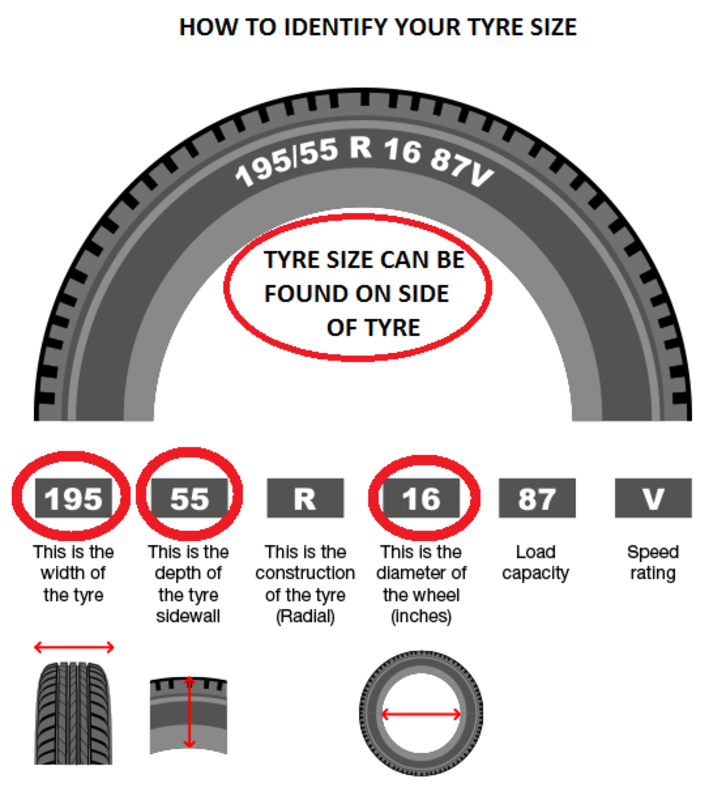
In the photo: fixing wheels on specially equipped hooks from GarazhTek
horizontally on top of each other.
The method of hanging tires is convenient in that you free up the lower tiers of the room and get rid of clutter. But there is a risk of hitting the wheels if they are not fixed against the wall or at a sufficiently high level. It is more convenient to fix the tires on the rims on special hooks that do not allow the tire to sway. Such hooks for tires will be helped by the GarazhTek company.
The horizontal method is convenient in that it allows you to save space on the upper tiers and prevents damage to the wheels from contact with other objects. This method is suitable for rooms with low ceilings, in which it is difficult to install a structure with hooks.
In the photo: the prepared rubber is sent to storage
Before sending the wheels to storage, it is necessary to prepare them.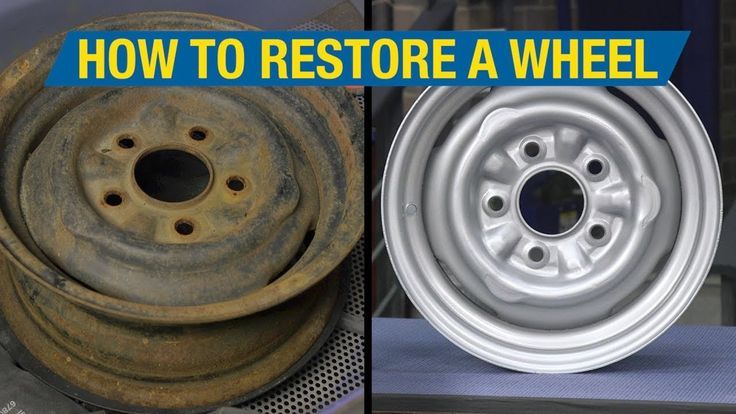 At the initial stage, you should wash and dry the tires well. Further, if desired, you can mark the wheels so that in the future it will be easier to navigate which wheel is rear, which is right or left.
At the initial stage, you should wash and dry the tires well. Further, if desired, you can mark the wheels so that in the future it will be easier to navigate which wheel is rear, which is right or left.
To keep the rubber in good condition, it is treated with a special spray. They contain oxidation inhibitors that prevent cracking and deformation of the wheels. Aerosol is recommended to cover the surface of tires in 2-3 layers.
At the final stage of rubber preparation, each wheel is placed in a special cover that prevents condensation from forming. Ordinary plastic bags will not fit wheels with rims. In this case, the appearance of condensate and, consequently, rust on the discs is inevitable.
In the photo: tire storage system from GarazhTek
As a rule, in winter it becomes necessary to temporarily get rid of summer tires. The procedure for storing summer tires in winter has its own characteristics. Summer tires have certain properties that help them withstand hot weather. Therefore, it is better to store such wheels in a warm room, where the temperature will not exceed +25 degrees, but will not fall below 0 degrees.
Summer tires have certain properties that help them withstand hot weather. Therefore, it is better to store such wheels in a warm room, where the temperature will not exceed +25 degrees, but will not fall below 0 degrees.
It is unacceptable for rubber to get any substances, chemicals. Summer tires can damage chemical fumes from loosely closed containers. The use of special bags and aerosol treatment of tires will have a positive effect on the quality of the wheels. These simple rules will help extend the life of the wheels.
The wheel storage rule also applies to winter tires.
In the photo: the finished version of the garage equipped with a storage system from GarazhTek
Having answered the question of how to store tires, it is important to decide where the wheels will be placed. The storage room for tires should help extend the life of the rubber.
In such a room, the temperature regime must be maintained within the range from 0 degrees to +25 degrees.